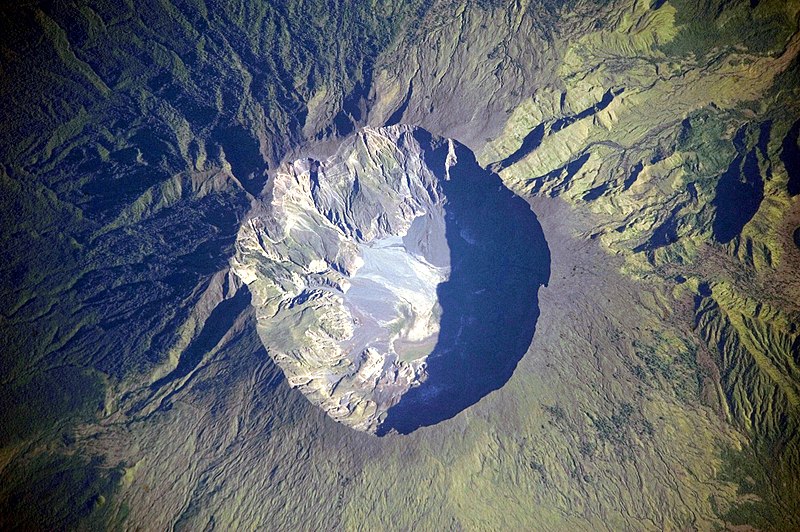Tiedosto:Mount Tambora Volcano, Sumbawa Island, Indonesia.jpg

Tämän esikatselun koko: 800 × 532 kuvapistettä. Muut resoluutiot: 320 × 213 kuvapistettä | 640 × 425 kuvapistettä | 1 024 × 680 kuvapistettä | 1 280 × 851 kuvapistettä | 2 560 × 1 701 kuvapistettä | 4 256 × 2 828 kuvapistettä.
Alkuperäinen tiedosto (4 256 × 2 828 kuvapistettä, 2,29 MiB, MIME-tyyppi: image/jpeg)
Tiedoston historia
Päiväystä napsauttamalla näet, millainen tiedosto oli kyseisellä hetkellä.
| Päiväys | Pienoiskuva | Koko | Käyttäjä | Kommentti | |
|---|---|---|---|---|---|
| nykyinen | 24. helmikuuta 2011 kello 15.55 |  | 4 256 × 2 828 (2,29 MiB) | Originalwana | higher res |
| 15. huhtikuuta 2010 kello 20.37 |  | 1 440 × 960 (619 KiB) | Rosenzweig | Reverted to version as of 11:04, 19 July 2009. Back to Commons version. | |
| 15. huhtikuuta 2010 kello 20.37 |  | 1 440 × 960 (459 KiB) | Rosenzweig | different version from de.wp | |
| 19. heinäkuuta 2009 kello 14.04 |  | 1 440 × 960 (619 KiB) | Originalwana | {{Information |Description={{en|1=This detailed astronaut photograph depicts the summit caldera of the volcano. The huge caldera—6 kilometres in diameter and 1,100 meters deep—formed when Tambora’s estimated 4,000-meter-high peak was removed, and th |
Tiedoston käyttö
Tätä tiedostoa ei käytetä millään sivulla.
Tiedoston järjestelmänlaajuinen käyttö
Seuraavat muut wikit käyttävät tätä tiedostoa:
- Käyttö kohteessa af.wikipedia.org
- Käyttö kohteessa ar.wikipedia.org
- Käyttö kohteessa ast.wikipedia.org
- Käyttö kohteessa ban.wikipedia.org
- Käyttö kohteessa be.wikipedia.org
- Käyttö kohteessa bn.wikipedia.org
- Käyttö kohteessa ca.wikipedia.org
- Käyttö kohteessa cs.wikipedia.org
- Käyttö kohteessa da.wikipedia.org
- Käyttö kohteessa de.wikipedia.org
- Käyttö kohteessa en.wikipedia.org
- Käyttö kohteessa en.wikiversity.org
- Käyttö kohteessa en.wikivoyage.org
- Käyttö kohteessa eo.wikipedia.org
- Käyttö kohteessa es.wikipedia.org
- Käyttö kohteessa fa.wikipedia.org
- Käyttö kohteessa fr.wikipedia.org
- Käyttö kohteessa fr.wiktionary.org
- Käyttö kohteessa gl.wikipedia.org
- Käyttö kohteessa gor.wikipedia.org
- Käyttö kohteessa he.wikipedia.org
- Käyttö kohteessa hr.wikipedia.org
- Käyttö kohteessa id.wikipedia.org
- Gunung Tambora
- Wikipedia:Hari ini dalam sejarah/April
- Wikipedia:Gambar pilihan/2011
- Wikipedia:Gambar pilihan/Usulan/2011/54 Intro
- Wikipedia:Gambar pilihan/54 2011
- Templat:Hari Ini Dalam Sejarah/April
- Wikipedia:Gambar pilihan/Tempat/Landskap
- Wikipedia:Arsip halaman utama/2023/04/10
- Wikipedia:Arsip halaman utama/2024/04/10
- Käyttö kohteessa it.wikipedia.org
- Käyttö kohteessa ja.wikipedia.org
- Käyttö kohteessa ka.wikipedia.org
- Käyttö kohteessa kk.wikipedia.org
Näytä lisää tämän tiedoston järjestelmänlaajuista käyttöä.



